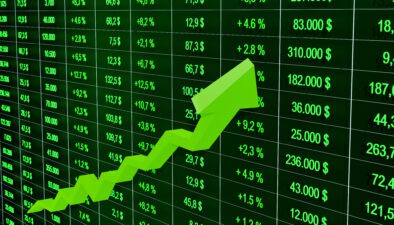Dividend investors tend to care about one thing more than all others: the security of their periodic payments.
These folks look at share prices a little differently than many other investors. The price of owned stocks doesn’t matter nearly as much to someone focused on dividends. They view stock prices as somewhat unpredictable. Rather, their focus is with the safety of the dividend. As long as they continue to get that periodic payment into their account, life is good.
This leads many dividend investors to obsess over a stock’s payout ratio–a simple measure of how much of a business’s earnings go towards paying dividends. A stock paying a $1-per-share dividend out of $2 per share of earnings would have a 50% payout ratio.
Many investors don’t go any further than this, choosing to take a pass on any companies that don’t pass this sniff test. These investors are doing themselves a major disservice. Here’s why.
Free cash flow
Allow me to talk a little about accounting. I promise it won’t be too painful. Specifically, let’s talk about depreciation.
When a company buys an expensive asset with a long-life-like real estate, it spends a lot of money up front. Such an asset is then gradually written off until it it’s worth nothing–at least on the balance sheet.
Say a company spends $1 million on a building and is allowed to depreciate it by 4% per year. After year one it would be worth $960,000. After year two, it would be worth $921,600. And so on.
Depreciation is an expense on the income statement. This means it gets deducted from revenue just like other business expenses–such as salaries, interest, or doughnuts for the break room. Thus, a company’s net income is any profits less depreciation.
The odd thing about depreciation compared to those other expenses is it isn’t a cash expense. A company has to physically pay for other expenses. Depreciation is just value deducted off assets. So even though it affects a company’s income, it doesn’t affect a company’s cash flow.
Cash flow is a relatively simple thing to figure out. It takes a company’s net income and adds back any depreciation costs as well as any other non-cash expenses. This becomes a company’s operating cash flow.
Investors would then deduct any capital expenditures to get a company’s free cash flow.
For dividend investors, free cash flow is the better indication of the health of a dividend. Using earnings unfairly penalizes companies with large depreciation expenses that can otherwise afford some attractive dividends.
Two examples
Capital Power Corp. (TSX:CPX) is a terrific example of the difference between earnings and free cash flow.
The company’s earnings are anemic, coming in at just $0.22 per share over the last 12 months. That puts shares at 87.8 times earnings–not enough to cover its 7.4% yield.
Free cash flow tells a far different story. Over the last year Capital Power has spent more than $200 million in depreciation on its fleet of power plants as well as a $53 million write-off in its most recent quarter. Once we add that back on to net income, the company goes from posting a profit of $0.22 per share to posting free cash flow of $3.37 per share.
That’s a massive difference. Shares went from trading at 88 times earnings to trading at just six times free cash flow. It turns the dividend of $1.46 per share from suspect to a payout ratio of less than 50%.
Another example is Aimia Inc. (TSX:AIM), a stock with an interesting balance sheet. Aimia runs the Aeroplan program for Air Canada, which is the type of business that requires very little in physical assets. Most of its assets are either goodwill or intangibles.
Aimia spends millions each year slowly writing off these intangible assets, which hits net income hard. Over the last year on an earnings basis, the company lost $0.35 per share. But on a cash flow basis, the company is healthy, generating $1.17 per share in free cash flow.
This turns the company’s $0.80 per share annual dividend–a yield of 9.94%–from suspect into a yield with a payout ratio of less than 70%.
While free cash flow isn’t perfect–it isn’t a worthwhile measurement for financial companies, for example–dividend investors who don’t have a working understanding of the concept are doing themselves a major disservice.
 Act Fast: 75 Only!
Act Fast: 75 Only!







